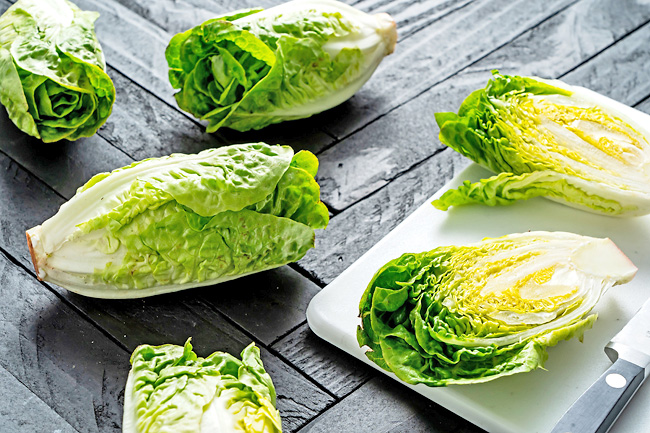Emily Heil
THE WASHINGTON POST – Trends come and go in salads just like they do in fashion. Kale, of course, is the most obvious example of a green that has risen to pop-culture status. But it’s not the only leaf that has gone for a ride on the shifting winds of modishness: Recall arugula’s 90s glow-up, and the way radicchio was suddenly everywhere in the early aughts. (A variety of rose-coloured radicchio even enjoyed its own turn as an It Green circa 2018, when its hue matched the then-ubiquitous ‘millennial pink’.) Think microgreens. Moss. The second coming of iceberg.
The rise over the past two decades of Little Gem lettuce, which combines characteristics of butter and romaine lettuces and resembles the smaller, tender inner leaves of a romaine head, might have been less splashy than those of its forebears. But it looks like this petite green is staying in the picture. Since its introduction to American diners in the last quarter century, you can now find Little Gem on restaurant menus from Atlanta to Los Angeles. And it’s increasingly showing up on grocery store shelves.
To hear chefs explain what they like about the variety is to appreciate the lettuce – but also the care and consideration they give to the smallest details of the ingredients they use to construct dishes.
Chicago restaurateur Paul Kahan said the flavour of a lettuce might be subtle, but it’s not insignificant. “Romaine can have a little astringency, but with Little Gem, you don’t get that,” he said. “It’s sweet and grassy to me.”
Chef and owner of San Francisco’s Nopa Laurence Jossel said the variety balances well with a vinaigrette. “The sweetness means it can take an acid nicely,” notes the chef, who instructs his staff to slightly overdress Little Gems because he finds the “juiciness” of the leaves slightly dilutes the dressing.
Kahan also likes how Little Gems soften just the right amount when dressed, unlike romaine, which “can take a half-gallon of olive oil and still stay as stiff as cardboard”.

Both Kahan and Jossel also like that the variety generates less food waste – something chefs appreciate for environmental and bottom-line reasons. Unlike some other types of lettuce, you don’t have to trim much at the root, there are no tough outer layers to discard, and fresh heads hold up relatively well, lasting a few days without wilting or browning in a walk-in refrigerator.
Little Gem’s origins are a bit murky, but it appears to have come from France, and first become popular in Europe and in the United Kingdom (UK). It sometimes goes by the name Sucrine, which is rooted in the French word for “sugar”.
Mentions of Little Gem in the English-language media before the early 2000s are mostly found in the British press. In a rare exception, a local news story from 1989 mentions Little Gem as an obscure addition to the Cornell Cooperative Extension list of recommended vegetable varieties for New York.
It’s nigh impossible to pinpoint a “Patient Zero”-style moment when the lettuce hopped the pond into United States (US) restaurants. But the story of how Kahan was introduced to the product tracks with the apparent migration pattern: Not long after he opened the first location of Avec in 2003, he invited his friend, the influential British chef Fergus Henderson, to guest-host a dinner. Henderson sent him the menu ahead of time, and Kahan set about procuring supplies, including the specified Little Gems.
“I had no idea what they were,” he said. “They were hard to find, but I eventually got some for the dinner.” The Chicago chef wound up liking them so much he put a Little Gem salad on his own menu, after enlisting a local farmer to grow them for him. Kinnikinnick Farm, located just south of the Wisconsin border in Illinois, tried out the variety and has been growing them ever since, he said.
Beloved by chefs and increasingly by home cooks, Little Gem also has characteristics growers like, as well, said associate professor and extension vegetable specialist at Texas A&M University Joe Masabni. He noted that it is compact and reaches maturity more quickly than many other lettuce varieties, meaning producers can turn around more of it. “It’s ideal for hydroponics,” Masabni said, “which is the way a lot of commercial lettuce is grown”.
Like many who encounter the variety, Masabni also delights in the aptness of its name. In many cases, “Each leaf is like the size of a tablespoon,” he noted, and for those who haven’t tried growing or eating it, “it’s an undiscovered gem”.
For Jossel, the proof that Little Gem has arrived? “Nobody has to ask what they are anymore,” he said. “We don’t even have to say ‘Little Gem lettuce’ – it’s just ‘Little Gem’.”




